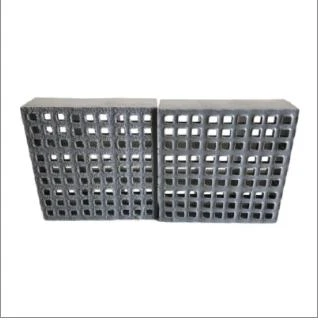loading...
- No. 9, Xingyuan South Street, Dongwaihuan Road, Zaoqiang County, Hengshui, Hebei, China
- admin@zjcomposites.com
- +86 15097380338
- Welcome to visit our website!
Advantages and Applications of FRP Reinforcement Bars in Modern Construction
Understanding FRP Reinforcement Bars A Modern Solution for Concrete Structures
Fiber Reinforced Polymer (FRP) reinforcement bars have emerged as a groundbreaking solution in the construction industry, offering several advantages over traditional steel reinforcement. As we advance toward a sustainable future, the search for materials that enhance durability, reduce maintenance costs, and withstand harsh environmental conditions has become increasingly pertinent. This article delves into the properties, advantages, and applications of FRP reinforcement bars, illustrating their essential role in modern construction.
FRP reinforcement bars are made from a combination of polymer resins and reinforcing fibers, typically glass, carbon, or aramid. These materials create bars that are not only lightweight but also exhibit remarkable tensile strength. Unlike steel, which can be subject to corrosion, especially in environments exposed to moisture or aggressive chemicals, FRP bars are inherently resistant to rust and deterioration. This characteristic significantly extends the lifespan of concrete structures, making them an attractive option for projects located in coastal areas or regions with high humidity.
One of the primary benefits of using FRP reinforcement bars is their resistance to chemical attack. Concrete structures are often exposed to various chemicals, including sulfuric acid, chlorides, and other aggressive substances that can compromise structural integrity. FRP bars withstand these challenges, maintaining their performance and reliability over time. This durability translates into lower maintenance costs and less frequent repairs, offering considerable long-term savings for project owners and developers.
Moreover, FRP reinforcement bars boast a lower weight compared to traditional steel bars. This lightweight nature simplifies handling and installation on job sites, reducing labor costs and increasing efficiency during construction. As a result, engineers and contractors can optimize their processes without sacrificing structural integrity. Additionally, the ease of transportation for FRP bars can lead to reduced fuel consumption and lower greenhouse gas emissions during construction projects, aligning with global sustainability goals.
frp reinforcement bars

A notable characteristic of FRP bars is their electromagnetic neutrality. Unlike steel, which can interfere with electromagnetic fields, FRP does not disrupt signals, making it ideal for applications in scenarios where electromagnetic compatibility is critical. This property makes FRP reinforcement bars suitable for structures such as bridges and tunnels where the presence of underground utilities and communication systems are of concern.
Applications of FRP reinforcement bars are diverse and growing. They are increasingly utilized in bridge construction, marine structures, parking garages, and in rehabilitation projects of existing structures. Additionally, FRP bars are often employed in precast concrete elements, enhancing the performance and longevity of these structures in demanding environments. The versatility of FRP materials continues to drive innovation in civil engineering, allowing for the design of more resilient infrastructures.
Despite their numerous advantages, FRP reinforcement bars also come with challenges. The initial cost of FRP materials can be higher than that of traditional steel reinforcement. However, when considering the total lifecycle costs, including maintenance and repairs, FRP bars often present a more economical solution. Furthermore, industry standards and guidelines for the design and implementation of FRP bars are still evolving, necessitating continuous education and research to maximize their effectiveness in various applications.
In conclusion, FRP reinforcement bars represent a significant advancement in construction materials. Their unique properties, including corrosion resistance, lightweight nature, and durability, make them an ideal choice for a variety of applications. As the construction industry continues to embrace innovative technologies, FRP reinforcement bars are poised to play a crucial role in building a resilient and sustainable future. Through ongoing research and development, the potential of FRP materials will further unfold, paving the way for improved infrastructure around the globe.
-
The Rise of FRP Profiles: Strong, Lightweight, and Built to LastNewsJul.14,2025
-
SMC Panel Tanks: A Modern Water Storage Solution for All EnvironmentsNewsJul.14,2025
-
GRP Grating: A Modern Solution for Safe and Durable Access SystemsNewsJul.14,2025
-
Galvanized Steel Water Tanks: Durable, Reliable, and Ready for UseNewsJul.14,2025
-
FRP Mini Mesh Grating: The Safer, Smarter Flooring SolutionNewsJul.14,2025
-
Exploring FRP Vessels: Durable Solutions for Modern Fluid HandlingNewsJul.14,2025
-
GRP Structures: The Future of Lightweight, High-Performance EngineeringNewsJun.20,2025
